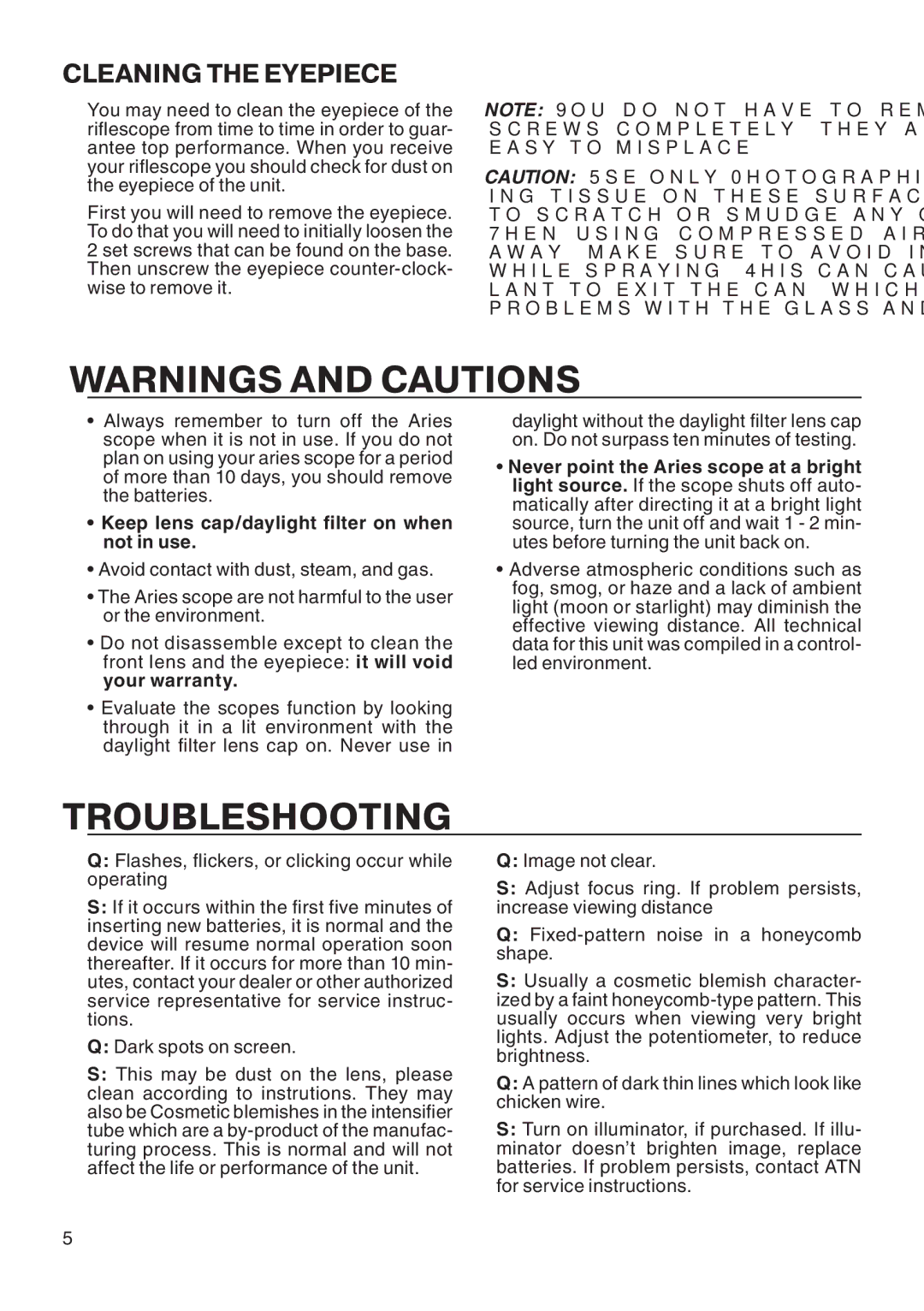8900, Aries 6900, 7900, 390, 6900, 7900, 8900 specifications
The ATN 390, 6900, 7900, and 8900 series are advanced night vision and thermal imaging devices designed to elevate performance in various environments, particularly for tactical, hunting, and outdoor activities. Each series offers unique features and technologies that cater to different user needs, blending innovation with ease of use.The ATN 390 series is ideally suited for entry-level users, boasting a compact design that makes it lightweight and portable. It employs cutting-edge digital night vision technology, providing users with a clear view in low-light conditions. With features like a built-in IR illuminator and enhanced optics, the 390 series allows for greater visibility and accuracy even in total darkness.
Moving onto the ATN 6900 series, this model enhances user experience through improved resolution and an array of smart features. It includes integrated Wi-Fi and Bluetooth connectivity, enabling users to stream live footage to their smartphones or tablets. One of the standout features is the ballistic calculator, which assists shooters in making accurate shots by accounting for environmental factors such as wind and distance.
The ATN 7900 series takes advancements further with higher magnification and more advanced thermal imaging capabilities. It features a modular design that allows users to customize the device for various applications. The 7900 series integrates an intelligent video recording system, allowing users to capture and share critical moments effortlessly. The enhanced onboard memory provides ample storage for high-definition recordings.
In the premium range, the ATN 8900 series stands out with its superior thermal imaging resolution and longer detection ranges. This series features advanced image processing technology which allows for clearer imagery even in challenging conditions. Additionally, the incorporation of a GPS and smart rangefinder provides hunters and tactical users with invaluable data on location and distance estimation.
The Aries line, specifically the Aries 6900 and 8900 models, is designed for those seeking professional-grade night vision capabilities. The Aries 6900 offers multi-coated optics and an ergonomic design for comfortable extended use, paired with versatile mounting options. The Aries 8900 significantly amplifies these features, including a wide field of view and advanced thermal sensitivity, perfect for tracking and surveillance.
Collectively, the ATN 390, 6900, 7900, 8900, and Aries 6900 and 8900 models represent the forefront of night vision technology, delivering exceptional performance, durability, and versatility for users ranging from novices to professionals in the field. Each device’s unique features and cutting-edge technologies make them indispensable tools for enhancing visibility and operational effectiveness in low-light conditions.

